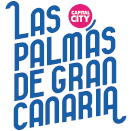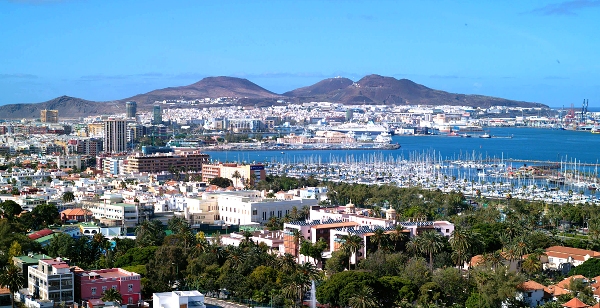First day, a travel to the past
An islander will always recommend you an easy troll trough the different neighbourhoods of the city since local people enjoy of Las Palmas de Gran Canaria without hurries. The fist day should therefore be spent in discovering the clues of historical development, the one that was carried to America, the past treasured by the Old Town of Vegueta and its streets and big museum houses with their picturesque balconies, its churches, its buildings with a high historical value, and the expositions that bring us from the prehistoric past, the Columbus’ adventure, and the religious art to the most modern one.
Triana, next to Vegueta, proposes a linear structure and numerous pedestrian areas to enjoy a walk looking at the showcases of the shops kept on the modernist facades of Triana and its adjacent streets. In this area, we will find the Pérez Galdós Theatre, Cuyás Theatre, Pérez Galdós Museum, the Centre for Cultural Initiatives, the Gabinete Literario (Literary Cabinet) and the Music Academy, thus giving this neighbourhood a mixture of cultural and commercial taste, along with locals and terraces full of ambiance day and night.
However, a day without visiting Las Canteras Beach, whether at noon or evening, is a day lost in this city.
Second day, tradition and nature
The British presence on the island left its imprint at the neighbourhood of Ciudad Jardín (Garden City), where there the Anglican Church and the former British Club stand. In this environment of chalets and hotels for visitors from Great Britain, the gardens of Parque Doramas were created next to Santa Catalina Hotel (built in 1890) and the Pueblo Canario, a compendium of local architecture that houses shops with handicrafts of the island and products of the land. Amidst this tourist oriented space, visitors will find the Néstor Museum, dedicated to the artist who projected this complex along with many other initiatives to promote tourism in Gran Canaria in the first third of the XX century. Besides, the museum keeps the pictorial work of this great artist, considered one of the most important of Spain’s symbolism and modernism, who also designed pieces of furniture, jewellery, dresses, and scenery while being a passionate cultural activist.
In the surrounding areas of the city, there are three amazing places: fist of all, the crater and peak of Bandama, an explosive volcano that might have been the last volcanic event in Gran Canaria, occurred in successive stages between two thousand and five thousand years ago.
Its name comes after a Belgian merchant, called Daniel Van Damme, who bought the terrain to grow grapevine. The spectacular crater and the impressive views from its peak make this visit a delightful souvenir.
The Royal Golf Club of Bandama, at the feet of the mountain, is the oldest on Spain. A few kilometres away there is an ancient prehistoric village, La Atalaya, where its current inhabitants still live in caves and earn its supplies preparing crockery and clay pots just like their ancestors did before the conquest of the island. Coming back downtown, a stop must be done at the Viera y Clavijo Botanical Gardens. It was created half a century ago and thus the trees and plants grown there are at its plenitude. Besides, the number of specimens from the Macaronesian area has been increased year after year making it the most important scientific and botanical centre of it kind, and a seed bank of prime importance in the world
Third day, the seaside city
The capital of Gran Canaria has one of the best beaches in the world. It is a great marine urban protected park, fully equipped and serviced, suitable for use all year round 24/7, where citizens enjoy its promenade, auditorium, restaurants, plazas, accommodation resources, pubs, and discos.
Along with the beach, with its sun beds and parasols, widely enjoyed by families and swimmers due to the safety given by the natural reef barrier, there are also two large areas for nautical sports.
On one side, next to the Auditorium, there is the Cicer area. This is an ideal surf spot. On the other end, there is El Confital. This is a natural open to the sea space, where little sandy coves and a large surf spot with a unique wave that attract surfers from the entire world who come to enjoy the famous ‘tube’ of this beach.
On the western side of this isthmus you will find the Port of La Luz and Las Palmas, a place to wander between ships from many countries and uses, from big and luxurious cruisers to the world’s largest vessels for carrying vehicles, containers, minerals or gas. Watching this bay is the Castle of La Luz, whose guns defended the island against several pirate and corsair raids who wanted to gain control of such an important spot this is on the trade routes between America and Europe.
Address: Las Palmas de Gran Canaria
35007 Las Palmas de Gran Canaria


